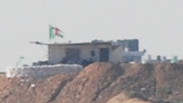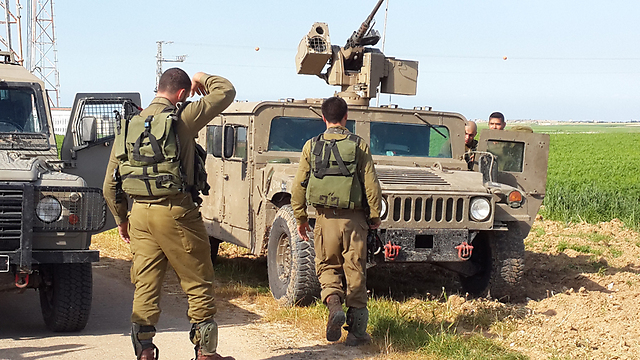
Clock ticking fast towards next round of Gaza fighting
Analysis: The worse Hamas' financial distress becomes – and the later international aid arrives – the more the organization will fire at Israel.
Four months after the end of Operation Protective Edge, one thing is already clear: The deterrence the political echelon and the IDF have been talking about so much is fading away.
Can anyone remember the calm we were promised for many years after the latest round of fighting or the declarations that Hamas "was hit so hard that it won't even try to raise its head" – just like Hezbollah after the Second Lebanon War?
Wednesday morning's sniper fire on an IDF force operating on the border fence inside Israel is no longer just a rocket fired by a rebel organization which Hamas has lost control over.
This time, it's an extremely serious incident, precisely because it's got Hamas' name written all over it. And if it were not for the excellent medical treatment the force gave the wounded soldier, the incident could have ended with a dead IDF soldier.
In the past few months, we have been witnessing a drizzle of rockets into Israel. On Friday, it reached the areas of Kibbutz Nir Yitzhak. No one could argue that the IDF strike which came in response to that incident was unnecessary: It targeted a concrete factory which produces the infrastructure for Hamas' offensive tunnels.
But Wednesday's incident completely contradicts the estimates voiced by Israeli sources that Hamas is not involved in the rocket fire executed by rebel organizations. Now there is no doubt: The attack was carried out by a Hamas sniper, and the organization claimed responsibility for it and warned Israel not to retaliate.
The assassination of Taysir al-Samiri, the commander of the al-Qassam Brigades' surveillance unit in the Khan Younis area, was random and was not preplanned. It was in fact a strike in the standard IDF retaliation procedure against Gaza fire, which happened to hit a senior Hamas member who was present in the area.
According to claims heard in the IDF's headquarters, it was a "local initiative" and it is quite possible that the leaders of Hamas' military wing were not aware of it. Many officers are convinced that the public in Gaza is still licking its wounds over the destruction left behind by Operation Protective Edge.
We must admit, however, that this explanation is reminiscent of the days before the operation and of the alarming difficulties in understanding the enemy's operation patterns and intentions.
The drizzle of rockets and Wednesday's sniper incident point to a different trend: We will not be able to continue the instinctive procedure of dismissing Hamas' responsibility due to the fact that it carried out arrests among the rebel organizations. This is a misrepresentation of the situation.
Hamas is no longer deterred: It continues to test rockets by firing them into the sea, it is rehabilitating its military abilities, building posts near the fence and trying to rebuild the tunnel infrastructure (even if there is no information yet that it has resumed the digging).
Hamas is in distress, mainly financial distress. The worse it becomes – and the later international aid arrives – the more it will fire at Israel. This means that the clock is already ticking fast towards the next round of fighting.











